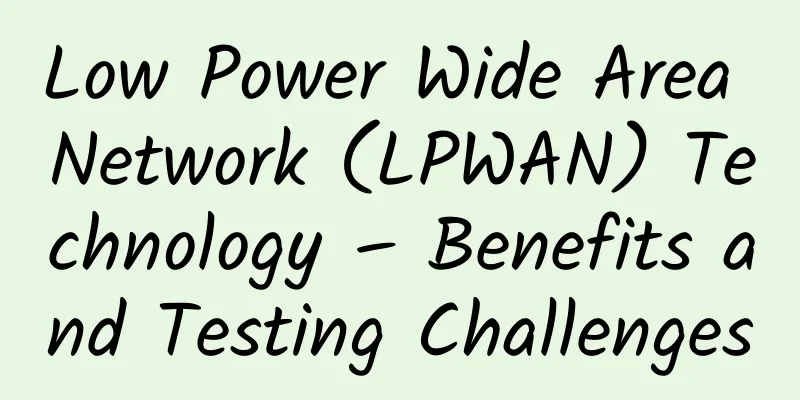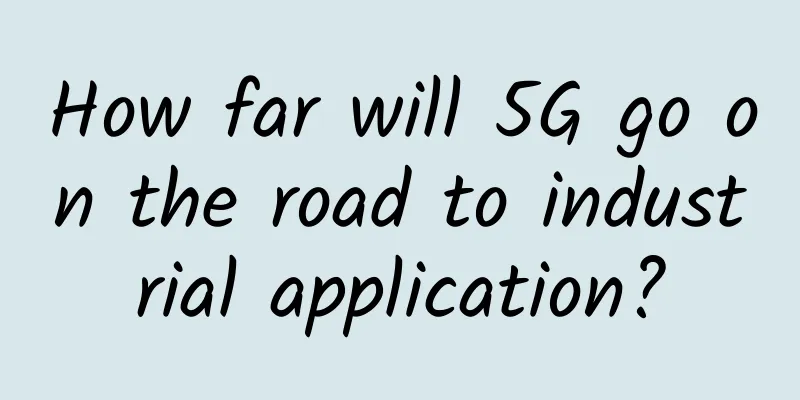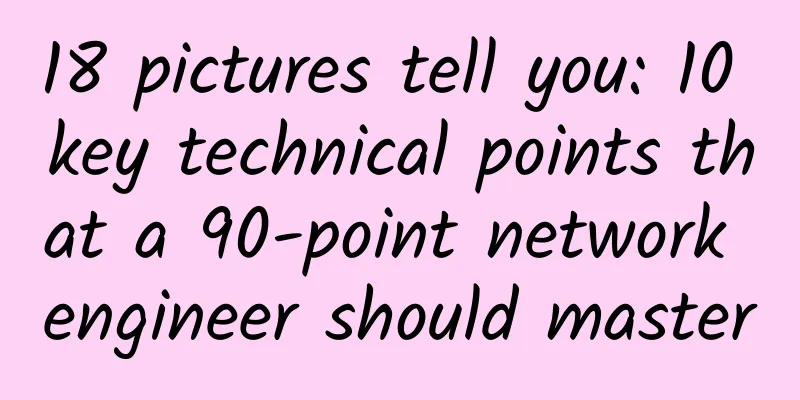Low Power Wide Area Network (LPWAN) Technology – Benefits and Testing Challenges

|
What is LPWAN? The Internet of Things (IoT) refers to a network of billions of devices connected to the Internet around the world. Common IoT devices include wearable devices and smart home devices. Such applications basically sacrifice some privacy in exchange for certain conveniences. In the industrial field, the advantages of IoT are extremely significant. It can not only improve productivity, reduce costs, and reduce energy consumption, but also allow machines to read massive amounts of data and perform actions based on it. By analyzing the data generated by all IoT devices, you can improve work efficiency or provide better services to your customers. Because you can understand your customers more deeply, you can provide new types of services and expand the scope of your services.
However, most of today’s wireless technologies are still not up to par with the requirements of the IoT, especially in terms of coverage or battery life. To meet IoT requirements, you must make a trade-off between data rate, power consumption, and range. To achieve low power consumption, you are forced to sacrifice data rate. ZigBee, BT LE, and NFC provide short-range coverage at moderate data rates and low power consumption. LPWAN is a technology that meets both the requirements of coverage and battery life. It provides the longest range with minimal power consumption and only a slight drop in data rate. Many smart city and smart utility applications, such as smart street lights, humidity sensors, smart metering, and smart parking, do not require high data rates but require very wide coverage. This is where LPWAN can come in handy. LPWAN Technology: Case Studies Let’s think about how LPWAN can be used to improve efficiency in wireless smart metering applications. A utility company is responsible for providing water to all households in a small town. The company has to send people to read water meters from house to house, and the entire process is done manually, which takes a lot of time to travel back and forth. If the company can install water meters in every household, then track water usage wirelessly and send data to the cloud, it will not only save a lot of man-hours, but also effectively reduce costs, allowing the company to focus on other areas. In addition, the utility company can better understand the water usage patterns of its customers and optimize water supply capacity based on relevant data to ensure that every household has sufficient water supply during peak hours. To track water usage wirelessly, the company must add a small hardware device, an IoT client or agent, to the water meter. This hardware reads the meter data and sends the readings to the cloud at regular intervals. In this case, data rate and latency are not important; the most critical factors are coverage and battery life. Because some water meters are installed in remote locations, basements, or hard-to-reach places, the wireless technology must support a wide coverage area and provide deep indoor coverage. The batteries in the water meters are expected to last more than 10 years. At this point, the challenges facing these service providers are:
To overcome these challenges, the company can adopt LPWAN technologies. These technologies can be broadly divided into licensed technologies and unlicensed technologies, each of which has its own advantages and disadvantages. LPWAN Technology Comparison Since cellular networks are expensive, use a lot of power, and require expensive hardware and services, many network providers have turned to unlicensed spectrum (such as LoRa, SIGFOX, and Telensa) to develop their wireless networks. These providers mainly develop their own low-cost base stations for applications such as critical infrastructure and agriculture. They start with small coverage areas and gradually expand the coverage of infrastructure to the whole country or the whole region, and then connect to the cloud through cellular backhaul links. On the other hand, licensed LPWAN technologies such as 3GPP NB-IoT or LTE Cat-M1 support software updates to existing cellular infrastructure, such as upgrading existing LTE and GSM base stations. By reusing existing 3G or 4G spectrum, they can quickly achieve national and international coverage and deployment. These technologies can support applications that rely on wide coverage, such as vehicle tracking, pet tracking, and logistics. In response to the need for technological evolution, they continue to develop more powerful standards to expand services to other areas, such as mobile communications, roaming, security, and authentication. Licensed and unlicensed LPWAN technologies have some things in common: high link budgets and long battery life. The main difference between the two is the different ecosystems surrounding these technologies. SIGFOX is an ecosystem of multiple chip vendors whose products use sub-GHz spectrum bands, with Sigfox managing the protocol and certification. The company offers very small packets (12 bytes) and very low device costs, and is one of the earliest LPWAN manufacturers. LoRa is a proprietary technology whose chips are provided by Semtech. LoRaWAN is a protocol built on the LoRa technology developed and certified by the LoRa Alliance. LoRaWAN is primarily a media access control (MAC) layer protocol that provides great flexibility for applications, but also poses a major challenge to engineers developing complete solutions. Narrowband IoT (NB-IoT), LTE Cat-M1 and EC-GPRS are all cellular IoT standards that use a multi-vendor ecosystem of chips or devices from multiple vendors. Like other cellular formats, their certification is managed by GCF/PTCRB. You only need to upgrade the software used by your existing cellular infrastructure to support these new technologies. Although they came out a few years later than unlicensed technologies, they were widely adopted by domestic and international companies after their release to support applications that require wide coverage, such as vehicle tracking, logistics and asset tracking. LTE Cat-M1 is a simplified version of the existing technology, a revision of LTE technology released by 3GPP. It uses simpler and cheaper chipsets and provides faster data rates than other LPWAN technologies. LTE Cat-M1 can also be supported via software updates to existing LTE infrastructure. Cat-M1 was initially deployed in the United States. NB-IoT is a new technology released by 3GPP, which can be supported by software updates to LTE or existing RAN infrastructure. Compared with other technologies, its advantages are relatively low device cost and good link budget. NB-IoT was initially deployed mainly in Asia or Europe. EC-GPRS is an improved version of GPRS that can be supported via software updates to existing GSM infrastructure. It achieves better link budgets than GPRS through signal relaying or retransmission. Other LPWAN formats include Telensa, Ingenu and Weightless. Telensa is a single-vendor device that uses chips from multiple vendors and operates in the sub-GHz band. The vertically integrated manufacturer focuses on smart street lighting and is beginning to enter the parking sensor field. Telensa has been widely deployed in street lighting applications in the UK, US and Asia. Ingenu is based on its proprietary RPMA technology and operates in the unlicensed 2.4 GHz band. Weightless has three different wireless designs and is managed by the Weightless Special Interest Group (SIG). LPWAN Requirements and Challenges LPWAN technologies are diverse and different, but they all share some common characteristics in order to meet the requirements of IoT applications.
Meeting these requirements is a major challenge for IoT device vendors.
|
<<: An article reveals the practice and thinking of edge computing reference architecture 2.0
>>: The invisible shift of HCI
Recommend
Just-in-time infrastructure: Infrastructure at the speed of business
Enterprises are under increasing pressure to deli...
An article to help you understand HTML5 MathML
[[347913]] HTML5 can use MathML elements in docum...
5G and the Internet of Things: Connecting Millions of Devices
As the number of connected devices continues to g...
SDN and NFV: Technology implementation and commercial deployment in full swing
On June 1-2, 2016, with the support of China SDN ...
Three lives and all things go hand in hand with wisdom | Beijing Unicom and Huawei jointly release the results of 5G Capital innovation project
[Shanghai, China, November 12, 2020] During the 2...
From 76 million 5G connections, we found the 7 most promising 5G IoT applications
5G is the fifth generation of mobile communicatio...
A world first! Traffic lights are used as 5G base stations: Japan has come up with a wave of cool operations
The small signal coverage range of 5G base statio...
[Black Friday] Megalayer: Hong Kong/Singapore VPS flash sale 9.9 yuan/month, Hong Kong server 199 yuan/month, top up and get 10% back
Megalayer launched a Black Friday flash sale, whi...
Interpretation of H3C's future industrial layout in the 5G era
One of the most important exhibitions of the year...
Accelerate the release of new infrastructure value with data as the core
[[341973]] Yu Yingtao, Co-President of Tsinghua U...
Practical analysis of network log correlation on OSSIM platform
This article mainly conducts an in-depth analysis...
[Black Friday] RackNerd: 9 data centers in San Jose/Seattle, KVM architecture, starting at $8.89 per year
RackNerd is a foreign VPS hosting company founded...
Summary information: edgeNAT/CoolCloud/51Cloud/Yunmi Technology/TianshengCloud/PigYun
During the Christmas and New Year holidays, we ha...
TCP send window, receive window and how they work
The chart above is a snapshot taken from the send...







![[11.11]edgeNAT: 30% off monthly VPS and 40% off annual VPS, top up 500 yuan and get 100 yuan](/upload/images/67cac04dc4c43.webp)

